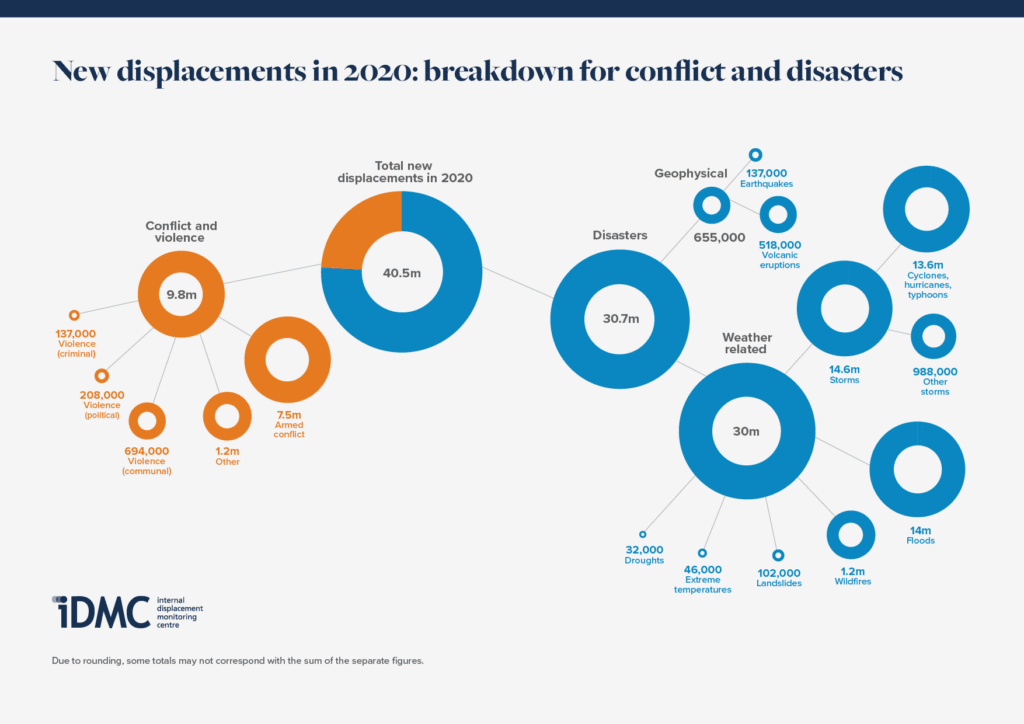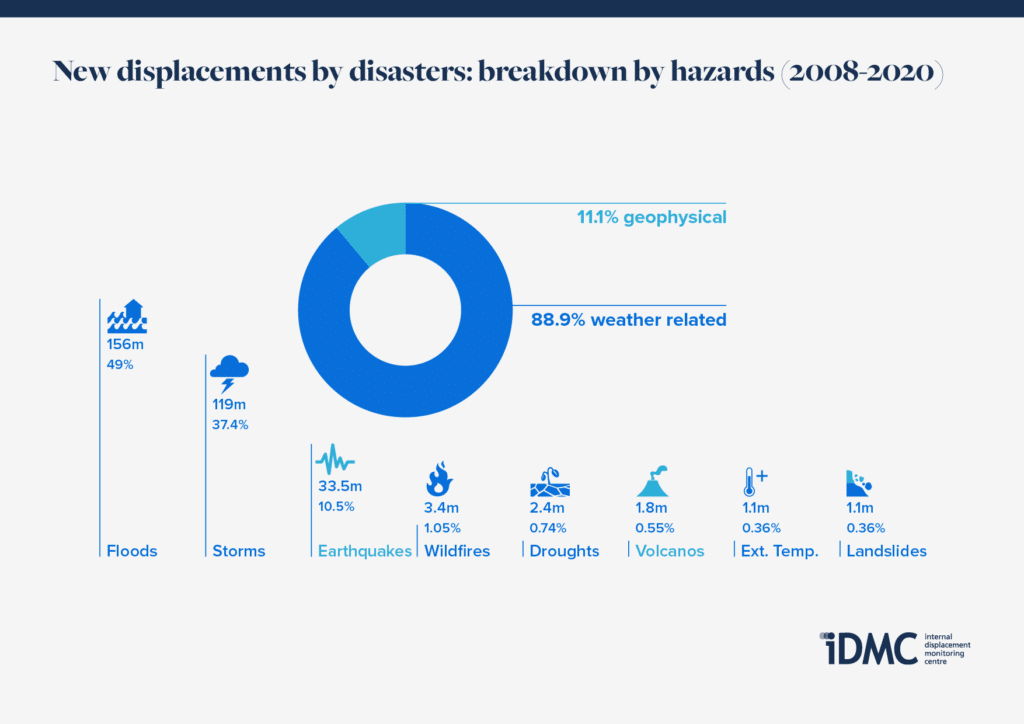
How Deteriorating Environmental Conditions Cause Migration Surges
By Alejandro Galicia Cervantes
Alejandro Galicia Cervantes was a recent 2021 Fall Fellow at Green 2.0 and a current senior at the University of California – Davis, pursuing a bachelor’s degree in economics and political science. He is a community changemaker by craft, program developer by training, an entrepreneurial scholar at heart: His mission is not only to curate a longitudinal study mapping legal status disparities but to build systems to support our most vulnerable communities. To mark International Migrants Day taking place on December 18, Alejandro writes about how deteriorating environmental conditions displace individuals around the world.
For International Migrants Day, let’s recognize the declining environmental conditions that force many individuals around the world to migrate. According to Alexandra Bilak, Director of Internal Displacement Monitoring Centre (IDMC), 2020 marked IDMC’s biggest recorded number of people living in internal displacement worldwide. Today, environmental conditions continue to deteriorate, likely causing the number of displacements to rise.
Let’s look at Guatemala as an example. Guatemala is known for periods of civil unrest that have caused many Guatemalan citizens to petition for asylum. However, residents of the state of Guatemala, Alta Verapaz, have largely stayed due to a stable economy that is reliant on coffee production. This pattern will likely change with relentless floods, droughts, and other factors that have pushed residents to move. Climate change also has caused many Guatemalans to migrate on dangerous trips to other regions and countries. Such migrants deserve global attention.

Similar conditions have increased in other parts of the globe. In 2020, total new displacements were measured at 40.5 million, 30.7 million of which were induced by disasters. Of the 30.7 million environmental displacements, 30 million were weather-related. These estimates include internal and external displacement. What’s important to note is the increasing trend of displacements due to natural disasters.
Environmental displacement is not the end of the problem. Legally-binding internationally recognized definitions for individuals that migrate due to environmental reasons do not exist. Despite the absence of an international consensus on a term, the International Organization for Migration (IOM) has proposed its own terminology. IOM labels individuals who move within their country or abroad due to sudden or progressive change in the environment that adversely affects their living conditions as “environmental migrants.” Ambiguity is purposely used in this definition to be inclusive of all possible circumstances.

Also, how environmental migrants integrate into their new environments, their legal protections, and the factors influencing their decision to return to their homelands, are all complex issues. Environmental displacement will only worsen as climate change intensifies. Government officials and other stakeholders must work together to find solutions to these problems.
In observance of International Migrants Day, we must raise awareness of the environmental conditions that displace individuals worldwide, the impacts of such migration, and the lack of international protections for migrants. Solutions to these complex issues must reflect a diversity of thinking and background to fully address the nuanced and complicated situations that force migrants to leave their homes.
For more information about Alejandro Galicia Cervantes, follow him on LinkedIn @Alejandroirl.
